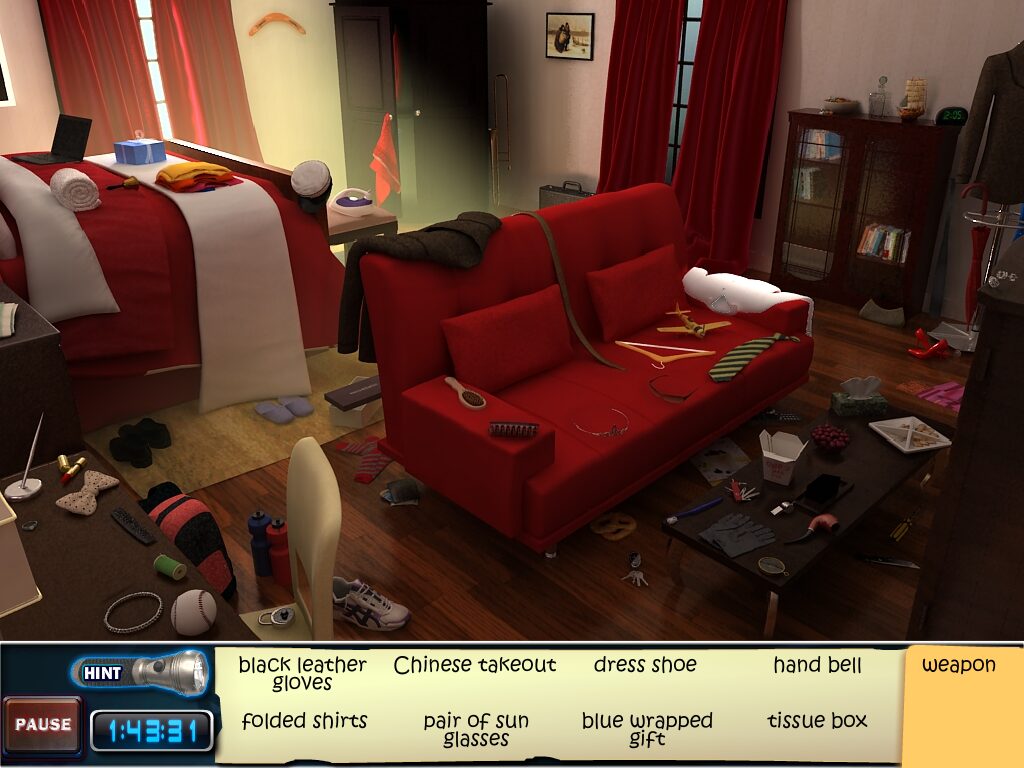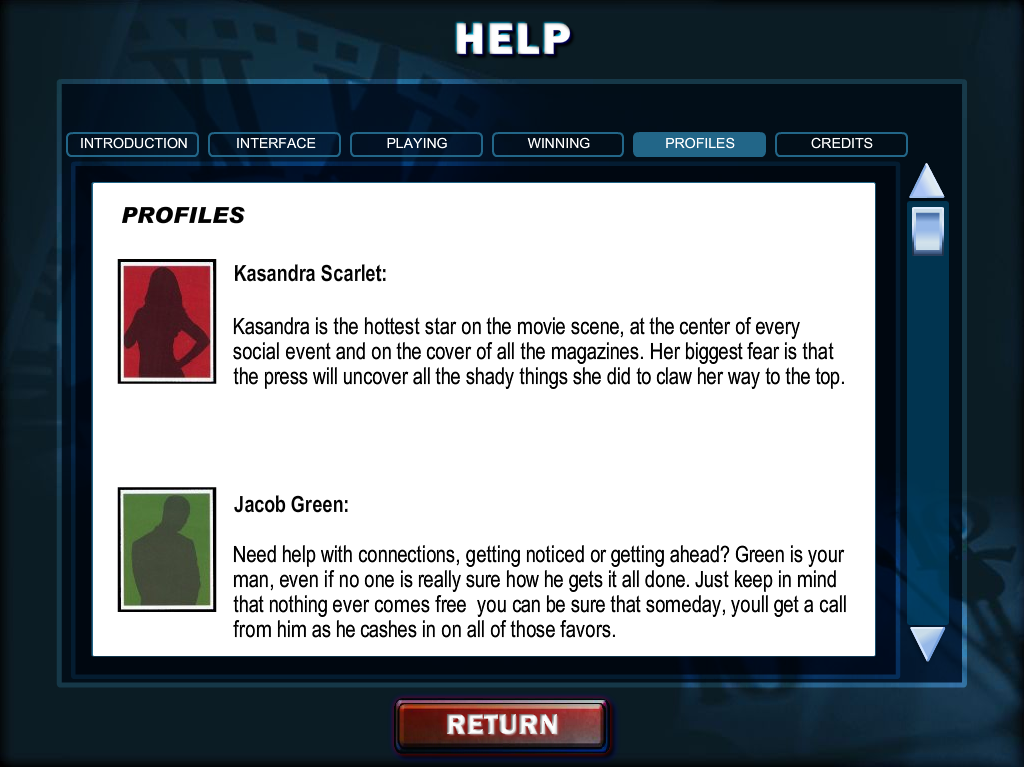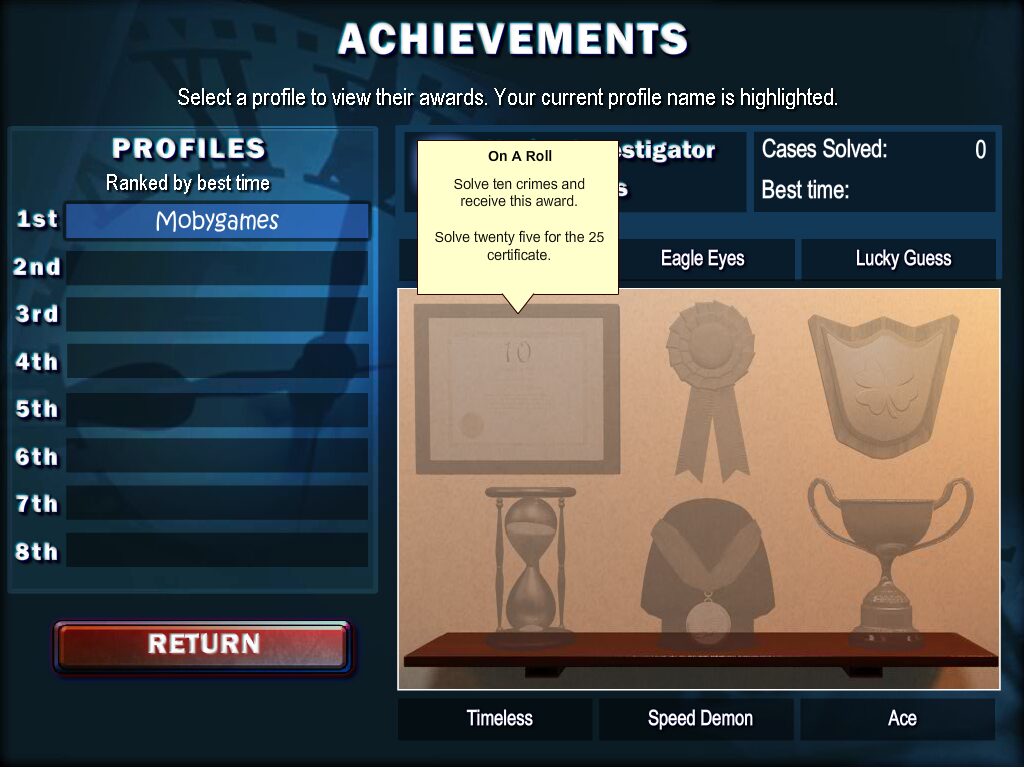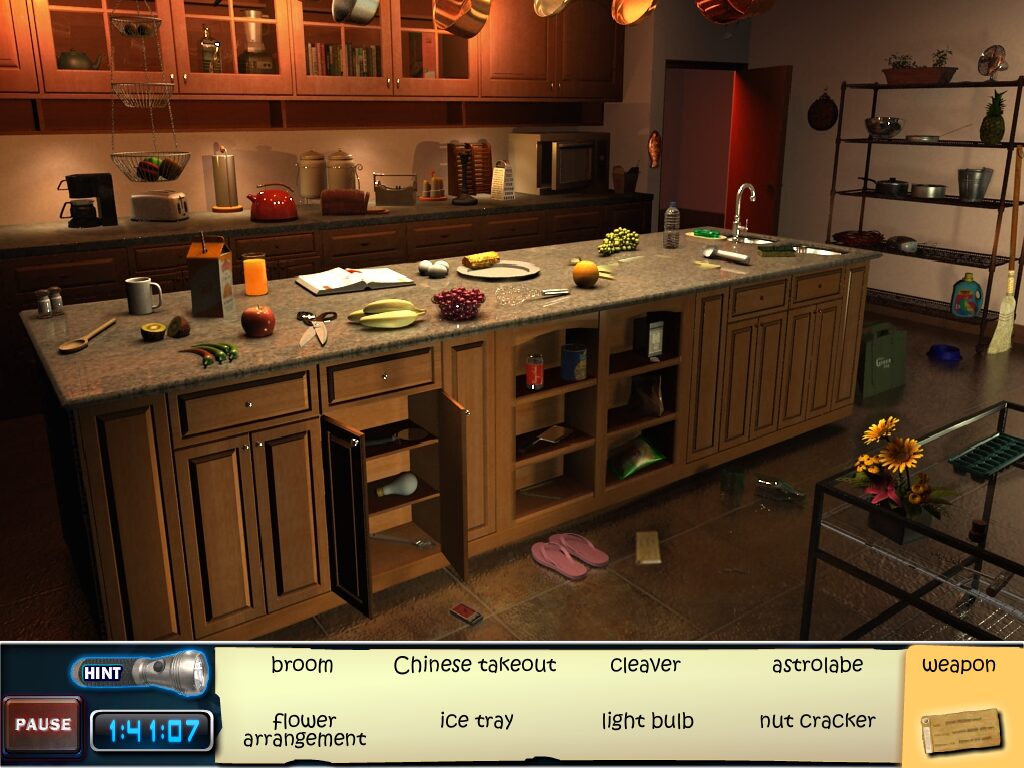Retro Replay Review
Gameplay
CLUE: Accusations and Alibis adapts the classic whodunit format into a hidden-object adventure, blending deduction with time-based challenges. Each room of the mansion becomes its own interactive puzzle, and you must locate all items on a scrolling list before your timer expires. A built-in flashlight tool can highlight one elusive object at the cost of precious minutes, while scattered clocks grant bonus time once collected, adding a strategic element to your search patterns.
(HEY YOU!! We hope you enjoy! We try not to run ads. So basically, this is a very expensive hobby running this site. Please consider joining us for updates, forums, and more. Network w/ us to make some cash or friends while retro gaming, and you can win some free retro games for posting. Okay, carry on 👍)
After successfully clearing a room’s object list, the game dives deeper into the mystery with a gossip phase. Here, you initiate a rumor about one suspect, one weapon, and one room; the suspects then drop hints in response. These clues automatically populate your hint log, helping you eliminate red herrings and narrow down possibilities. The balance between rushing through hidden-object scenes and carefully choosing which rumors to start creates an engaging risk-and-reward loop.
A top-screen tab system keeps your investigation organized. The game map shows the entirety of the mansion and lets you pick your next destination. The checklist tab lets you mark off or cross out suspects, weapons, and rooms based on incoming clues—complete with a red “X” overlay for definite exclusions. Meanwhile, the evidence tab catalogs all collected items, from coat check tickets to discovered tools, providing a quick reference for costume details or weapon origins.
Finally, once you’ve investigated every room, an accusation screen confronts you with the big reveal: who the murderer is, which weapon was used, and where the crime took place. Because the hidden-object layouts and sight lines randomize on replay, each new game forces you to revisit rooms from different perspectives. This procedural twist keeps the gameplay fresh even after you’ve solved the case once.
Graphics
The visual presentation in CLUE: Accusations and Alibis leans heavily into atmospheric detail. Each room of the mansion is meticulously illustrated, from the lavish drawing room’s ornate furniture to the dusty corners of the billiard room. Textures and color palettes vary subtly between environments, giving each hidden-object scene its own distinct mood and visual signature.
Objects often meld seamlessly with the background, challenging your observational skills. Small flourishes—like a glint of light reflecting off a candlestick or the faint outline of a glove draped over a chair—reward players who scrutinize every pixel. The flashlight mechanic not only serves gameplay, but also draws your eye precisely to where the object resides, offering a smart visual cue without feeling like a cheat.
User-interface elements are clean and intuitive. The bottom-of-screen object list remains legible against ever-changing backgrounds, and the four tabs at the top stay out of the way until needed. Menus and icons feature a polished, slightly vintage style that harmonizes with the game’s 1920s mansion aesthetic. Animations—such as pages flipping in the hint log or a clock ticking down when you pick up bonus time—add life to what could otherwise be a static hidden-object format.
Lighting effects and ambient animations round out the presentation. Subtle dust motes drift in sunbeams, while a flickering lamp in the library hints at the passage of time. Though this isn’t a first-person 3D romp, the layered 2D artwork consistently feels rich and immersive, elevating what could have been a routine search-and-find puzzle into a visually engaging detective experience.
Story
While CLUE: Accusations and Alibis doesn’t unfold a sprawling narrative, it successfully captures the spirit of a classic murder mystery. The premise remains faithful to the original board game: an untimely death in a grand mansion, six suspects cloaked in motive, and a single tool of demise. Every hidden-object scene is framed by the tension of circumspect whispers and shadowy corners, encouraging you to remain vigilant for every clue.
The rumor mechanic serves as the game’s primary storytelling device. Each time you spark gossip about a suspect, weapon, and room pairing, you unveil new tidbits of personality or contradictory alibis. These momentary vignettes flesh out the cast, turning them into more than cardboard cutouts. When Colonel Mustard stubbornly denies ever seeing a candlestick or Miss Scarlet coyly changes her story about the billiard room, the plot gains texture.
The clue log doubles as a chronicle of your sleuthing progress. As you gather evidence—coat check stubs denoting clothing colors, fragments of overheard conversations, or a suspiciously discarded glove—you build a mental map of suspects’ whereabouts and possible motives. By the time you reach the accusation phase, you’ll feel immersed in your own amateur detective saga, urging you to piece together every thread before declaring your final case file closed.
Replayability also enriches the storytelling. As object placements and sightlines shift on subsequent playthroughs, you’ll encounter new angles on familiar rooms and fresh combinations of item placements. This procedural variation ensures the narrative doesn’t grow stale; each play session feels like a newly unearthed chapter of the same enduring mystery.
Overall Experience
CLUE: Accusations and Alibis offers a satisfying blend of timed hidden-object puzzles and classic deduction, perfect for fans of both genres. The ticking clock injects urgency into every room, while the strategic use of clues and rumors delivers a genuine “aha” moment when you eliminate your final suspect. Players seeking a cerebral diversion will find themselves repeatedly drawn back to unravel the case under new conditions.
The game’s pacing strikes a careful balance between pressure and discovery. Beginners can take a steady approach—conserving their flashlight uses and hunting every clock—while veterans can push themselves to complete rooms quickly for a more intense challenge. The multiple tabs (map, checklist, evidence, hint log) give you full control over your investigative style, catering to both methodical planners and on-the-fly decision-makers.
Though the core gameplay loop remains uniform—enter room, find objects, gather clues—the randomization of object positions and occasional shifts in viewpoints maintain a sense of novelty. Combined with the polished presentation and atmospheric audio cues (gentle creaks, distant murmurs), Accusations and Alibis transcends simple hidden-object fare to become an engaging detective toolkit.
Whether you’re a veteran of the board game or new to the world of Clue, this digital adaptation provides a rich, replayable mystery experience. Its blend of ticking timers, dynamic rumor-spinning, and visually detailed search scenes makes it a compelling purchase for anyone craving a smart, suspenseful puzzle adventure.
 Retro Replay Retro Replay gaming reviews, news, emulation, geek stuff and more!
Retro Replay Retro Replay gaming reviews, news, emulation, geek stuff and more!









Reviews
There are no reviews yet.